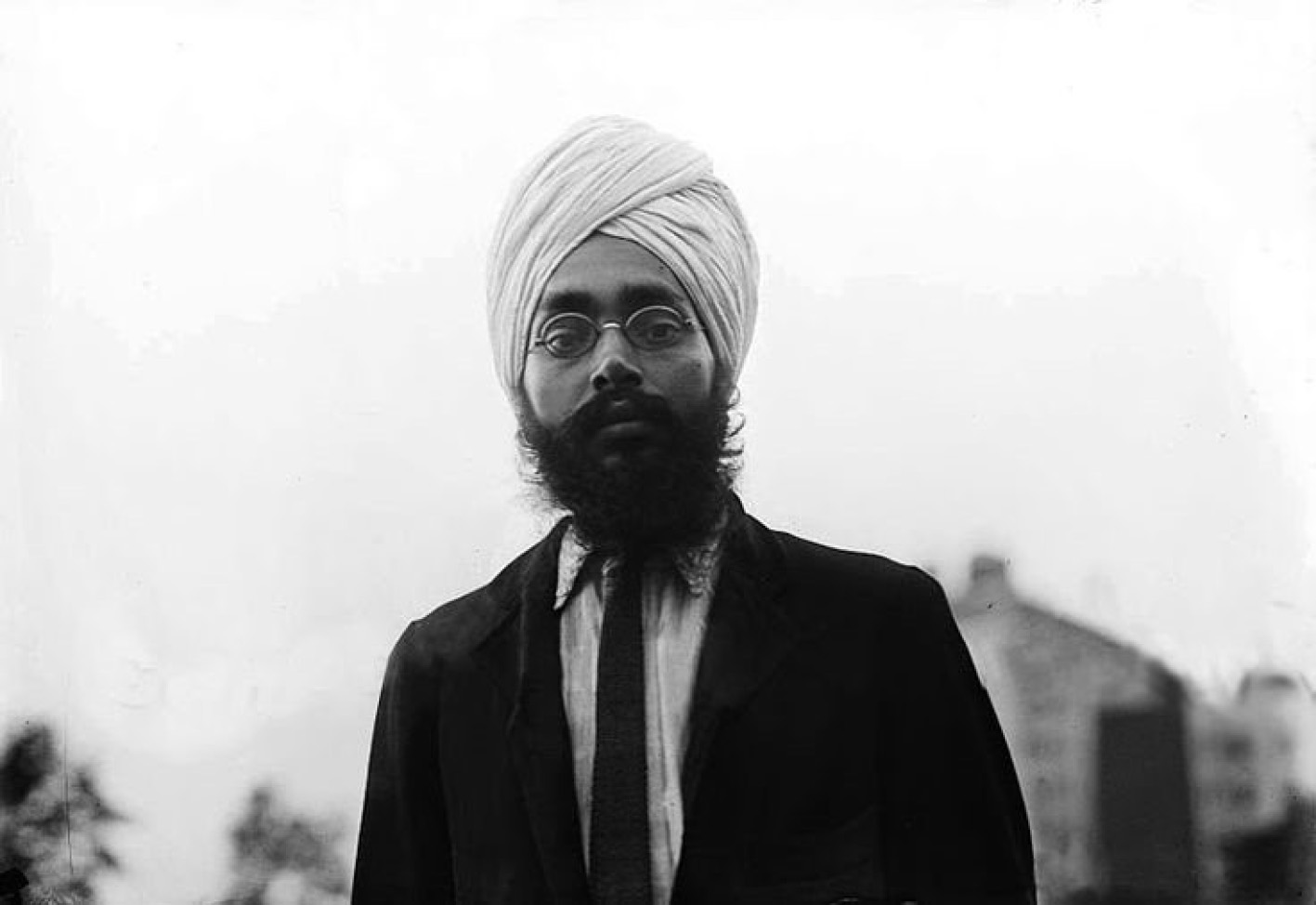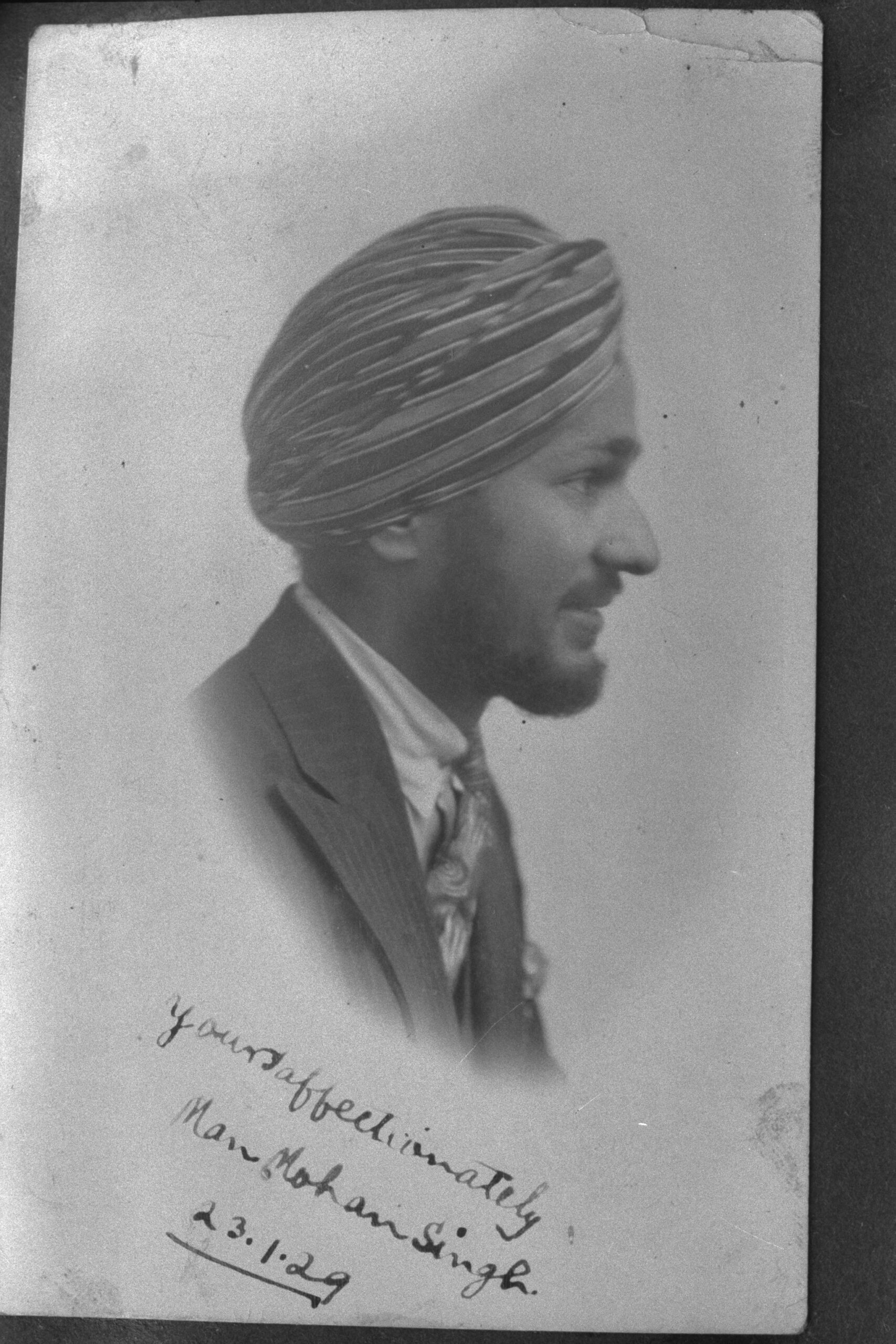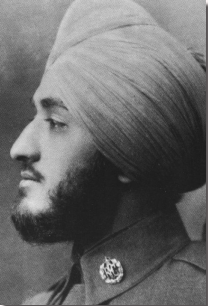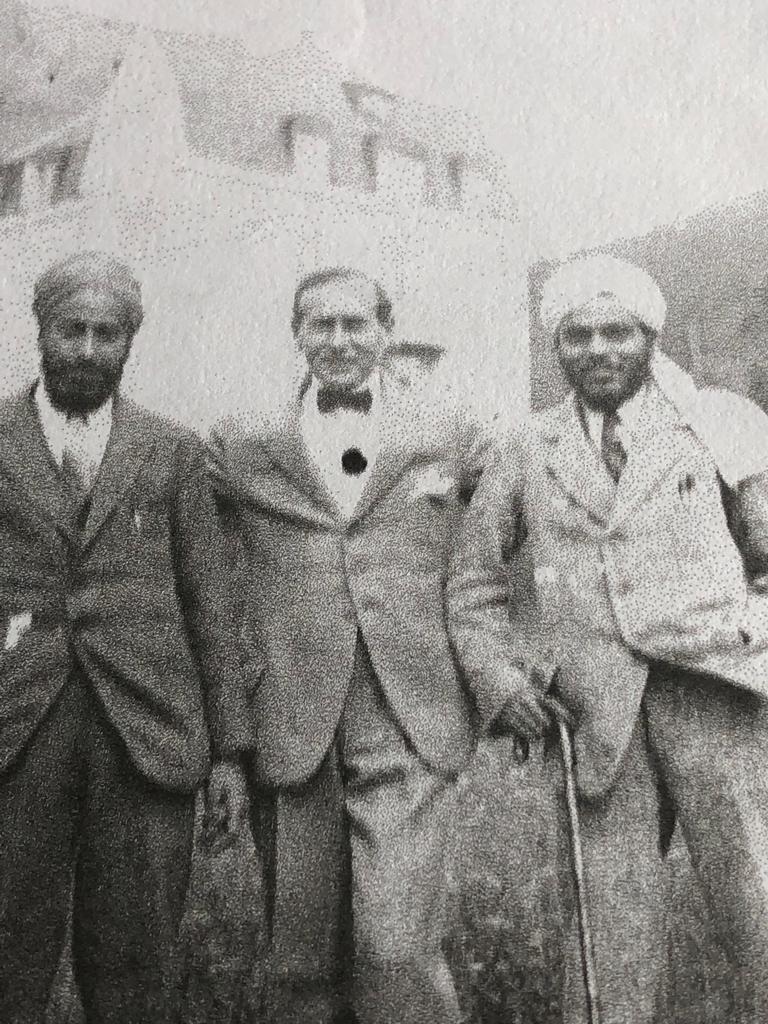EARLY SETTLERS
IN BRITAIN
ਸੋ ਕਾਮੇ ਇਕ ਅਹਾਰੀ
So kame ik ahari.
There is only one leader among hundreds of workers.
Sikhs settled in the UK and in other places sporadically throughout the twentieth century before the partition of 1947. Many fought in the British Indian Army throughout the British Raj, which lasted from 1858– 1947, whereas others came to study and establish thriving careers. Here are some examples of those that made lasting contributions to their new homes.
Sant Teja Singh
(1877–1965)
Teja Singh was born in 1877 in the Gujranwala district, and soon proved himself to be an insightful and hard-working scholar. He became the vice principal of Khalsa College in Amritsar at only 27 years old. After meeting Sant Atar Singh in 1905, Teja Singh was persuaded to travel with three other men the following year—Amar Singh, Dharam Singh and Hari Singh—to pursue their education and spread the message of Sikhism. Once in the UK, they all enrolled in different universities, with Teja Singh becoming the first scholar at Cambridge to wear a turban after he successfully challenged the rules forbidding them. After travelling and giving talks in Canada, Teja Singh returned to the UK in 1910 and established the first Gurdwara in Shepherds Bush, London.
Hardit Singh Malik, OBE, CBE
(1894–1985)
Born in Rawalpindi in 1894, Hardit Singh Malik was schooled in England from the age of 14 and graduated from Balliol College, Oxford in 1915. He became an Indian civil servant before becoming the first Indian High Commissioner to Canada and then Indian Ambassador to France. An ambulance driver in France with the Red Cross until 1916, then first Indian to fly as a pilot with the Royal Flying Corps in the first world war. He wore a specially designed helmet that fit over his turban. He knew he couldn’t be given a permanent commission in the British Army as an Indian, so he joined the civil service. However, as one of only two surviving Indian RAF pilots, he appeared before the Indian Sandhurst Committee in the 1920s to persuade them to send six Indian cadets for training in England for pilot training. Those six men would be the first Indian officers in the Indian Air Force in 1932. Hardit Singh later went on to become India’s High Commissioner to Canada and later, France.




Manmohan Singh
(1905–1942)
Manmohan Singh was born in 1905 and raised in Rawalpindi before going to study civil engineering at the University of Bristol in 1923. He won a scholarship to go on to study aeronautical engineering and learn to fly from the Government of British India, and received his pilot certificate from Filton, South Gloucestershire. Manmohan Singh competed against other pilots such as Aspy Merwan Engineer (head of the Indian Air Force from 1960) and Jehangir Tata (eventual founder of Tata Motors) in the Aga Khan race. In order to win the prize of £500, the pilots had to be the first to fly solo between England and India. Manmohan Singh successfully flew from Croydon to Karachi in 1930, but arrived one day too late to meet the deadline, and Aspy Engineer took the prize instead.
Major Lochan Singh
(1902–1996)
Major Lochan Singh was born in Kahuta in 1902, and was educated at Queens College, Belfast and Imperial College, London. He rose through the military ranks and the civil service under the British Empire, and became the first post-master general and then secretary of state for post and communications. During the second world war, Major Lochan was posted to Baghdad from Sandhurst in order to oversee the development of a new telecommunications network across the Middle East. This was crucial to the co-ordination of allied military advancements in the area during the conflict. He married Sushila Toor, and together they founded the Potohar Educational Trust for postgraduate studies, which is now managed by their three daughters.
“Aviation has already taken a strong hold in India and now it is going ahead by leaps and bounds.”
manmohan singh